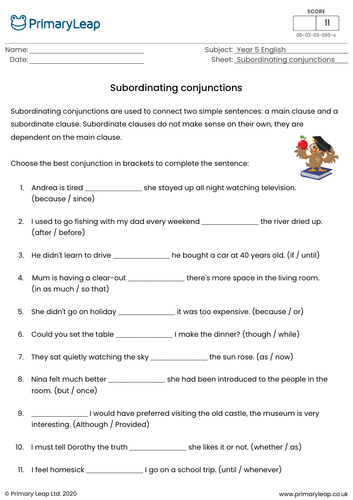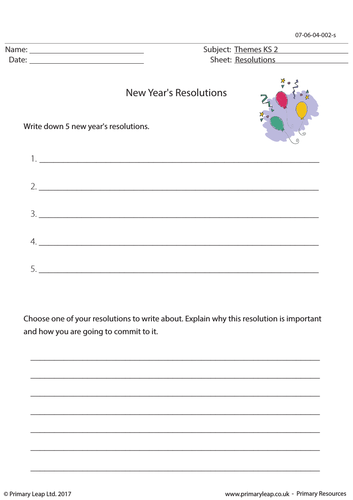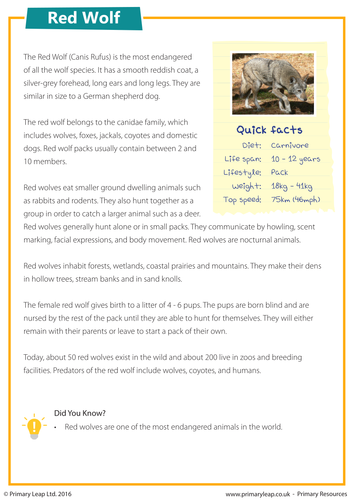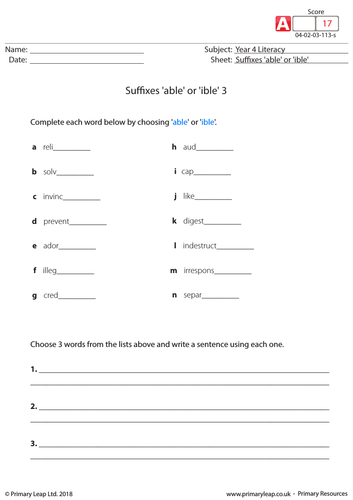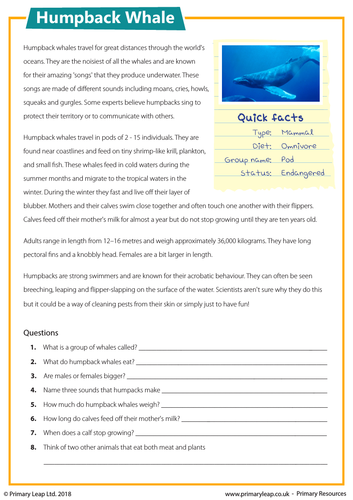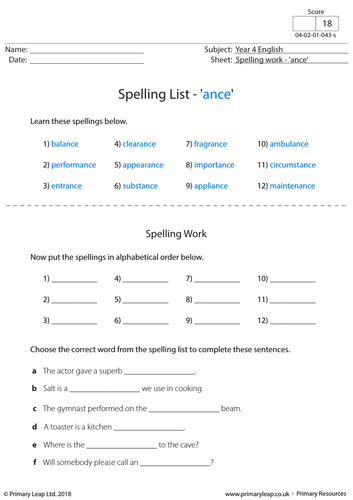512Uploads
453k+Views
210k+Downloads
English language arts

KS2 English Worksheet: Suffix - 'tion' words
A suffix is a phonetic unit that is placed after a root word. This English resource focuses on the suffix: tion. Students complete the sentences by writing the correct word.
This worksheet was created by Lauren Savage @ Primary Leap

KS2 English - Subordinating conjunctions
Subordinating conjunctions are used to connect two simple sentences: a main clause and a subordinate clause. Subordinate clauses do not make sense on their own, they are dependent on the main clause. This English activity asks students to choose the best conjunction in brackets to complete the sentences.
Resource created by Lauren Savage

Making Inferences from Pictures 1
Inferences are what we figure out based on an experience. Helping students understand when information is implied, or not directly stated, will improve their skill in drawing conclusions and making inferences which is an essential skill in reading comprehension. This English resource shows 2 happy children using a laptop. Students are asked to look at the picture and then answer the questions, giving their reasons for each answer.
Find more resources at Primary Leap

English Worksheet: Adverbs with Suffix - ly
This year 3 English resource is designed to encourage children to use adverbs with suffix - ly. Students write their own sentences using the words provided.
Additional worksheets, lesson plans, and interactive activities are available on Primary Leap.

KS2 English - Coordinating conjunctions
Coordinating conjunctions are used to connect sentences, words and phrases. They act as a kind of glue, linking the text together to help the sentences flow smoothly. This English resource asks students to choose the best conjunction in brackets to complete the sentences.
Worksheet created by Primary Leap

New Year's Resolutions Worksheet
Students write down five new year’s resolutions. They then choose one of their resolutions to write about and explain why it is important to them and how they’re going to commit to it.
This worksheet was created by primaryleap.co.uk

Reading Comprehension - Red Wolf
This KS2 reading comprehension includes a passage with some interesting facts about the red wolf. Children read the text and then answer the questions that follow. This worksheet was created by primaryleap.co.uk

KS2 English Resource - Suffixes 'able' or 'ible'
A KS2 literacy worksheet focusing on the suffixes ‘able’ and ‘ible’. Students complete each word by choosing ‘able’ or ‘ible’.
This worksheet was created by Primary Leap

Verb prefixes - dis and mis
A prefix is a group of letters added before a word to alter its meaning. The prefix ‘dis’ is generally used to make a word negative. The prefix ‘mis’ means badly, wrongly or incorrectly. This English resource asks students to choose the correct word to complete the sentence.
This worksheet was created by Lauren Savage

Making Inferences from Pictures 3
Inferences are what we figure out based on an experience. Helping students understand when information is implied, or not directly stated, will improve their skill in drawing conclusions and making inferences which is an essential skill in reading comprehension. Students are asked to look at the picture and then answer the questions.
Find more resources at Primary Leap

KS2 English worksheet: Phonics - 'ire' and 'ear' words
This English worksheet asks students to complete the sentences by choosing the correct word from the word bank. This resource focuses on the phonics ‘ire’ and ‘ear’.
This worksheet was created by Lauren Savage @ Primary Leap

KS2 Reading Comprehension - Humpback Whale
This year 5 English worksheet includes a short passage with facts about humpback whales and questions to follow.
This worksheet was created by Primary Leap

Match the Contractions - English Resource
A contraction is a word made by shortening and combining two words. Words like can’t (can + not) and don’t (do + not) are contractions. Students draw a line to match the contractions.
Additional worksheets, lesson plans, and interactive activities are available on Primary Leap.

Common Exception Words 2
Common exception words are ‘tricky words’ to read. Some exception words are used very frequently, which is why children should start reading and writing them at an early age. This English resource helps students practise reading and writing common exception words. They are asked to read the word and use it in a sentence.
Find more resources at Primary Leap

Relative clauses
Relative clauses are used to connect sentences. We use relative clauses to give additional information about something without starting a new sentence. The most common relative pronouns are: who, whom, whose, which and that. This English resource asks students to choose the best relative pronoun to complete the sentences.
This worksheet was created by Lauren Savage

KS2 English Worksheet - Spellings 'ance'
A KS2 English resource including a list of 12 words ending with ‘ance’ for students to learn. There are exercises including putting the words in alphabetical order and choosing the correct word from the spelling list to complete the sentences.
This resource was created by Primary Leap

Reading comprehension - Christmas in France
This worksheet was created by Lauren Savage @ Primary Leap
What happens in France at Christmas? Students are asked to read the text and answer the study questions.

Christmas Spellings 2
This worksheet was created by Lauren Savage @ Primary Leap
This Christmas themed worksheet includes 12 spellings for children to learn. Children must also put the spellings in alphabetical order and fill in the missing words to complete the Christmas carols.

KS2 English Worksheet - Hidden Words
This worksheet was created by Lauren Savage @ Primary Leap
Students use a word of two letters to fill the gap in each of the sentences.

Phonics - ow and oa
This worksheet was created by Lauren Savage @ Primary Leap
Learning phonics - a KS2 English worksheet that focuses on ‘ow’ and ‘oa’. Children must fill in the missing letters and sort the words correctly. This resource is great for reading and spelling.


